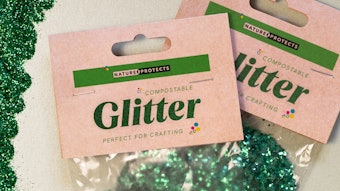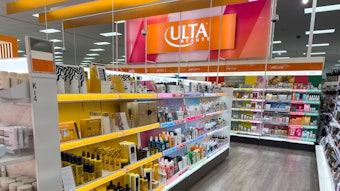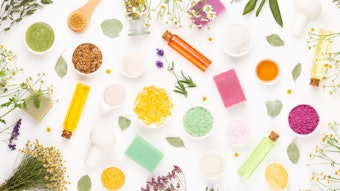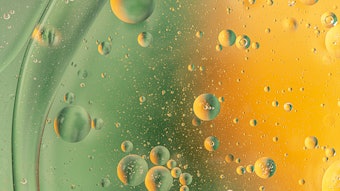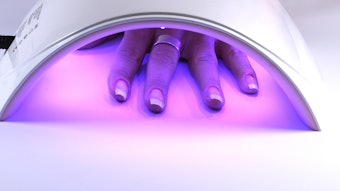
- Beauty brands are teaming up more and more with their suppliers to ensure the way they are promoting the sustainability and eco-friendliness of their products is the most advantageous, learning about the supply chain and different attributes of different ingredients they can bring to consumers.
- Getting involved in the education of consumers about what constitutes an eco-friendly product is a must for brands that take green claims seriously and use these claims to help their products stand apart.
It’s not easy being green—or is it? That depends on who you ask. Since the dawn of the millennium, there’s been an increase in demand for sustainably sourced beauty and personal care products made with “natural” ingredients. However, in the U.S., that term has no agreed upon definition.
“The challenge for brands that were founded and built on this natural and organic philosophy is that there is no current standard for what constitutes ‘natural’ in the U.S., and it falls to each brand to educate their customers on the uniqueness of their offer,” explains Victor Morrison, CEO of Dr. Hauschka Skin Care.
Thus, the brands truly dedicated to eco-friendly beauty are finding suppliers with the same mindsets—and similar challenges, as the suppliers must prove to their clients, the brands, that their ingredients are the real deal.
Here’s how some rise to the occasion and bring meaning back to the term “green.”
Setting Their Own Standards
When the sustainability standards are simply not up to par with what a supplier believes they can deliver, some suppliers have taken it upon themselves to set their own, more stringent criteria.
In 1995, Dow Consumer & Industrial Solutions set board-level goals to improve the company’s environmental, health and safety performance by 2005—and exceeded its internal expectations. As a result, the company is reaching additional goals set by its Sustainability External Advisory Council, and use a rigorous R&D sustainability footprint tool that is applied to all product innovation projects. “Taking a sustainable approach to our products, our technologies and how we formulate new products for our customers is a given,” says Kate Geraghty, global sustainability leader at Dow. “It’s become part of our DNA to continually look to make our products a little lighter on the environment than the ones that came before.”
Natural Plant Products, an Oregon-based farming cooperative of more than 50 farms that produce the crops for the company’s Meadowfoam Seed Oil, works directly with its growers to ensure they’re adhering to the same standards. While each farm is unique, the close relationship between supplier and grower has resulted in synergy and success.
“We used a sustainability calculator that is backed by Unilever, Kellogg, Monsanto, Cargill and McDonald’s in order to publish an article modeling the potential environmental sustainability issues we face on farms,” comments Aaron Reber, global marketing manager of Natural Plant Products. “In using this calculator, we modeled soil erosion, water quality and energy usage, and were able to look at how we operate and which levers to pull to affect different outcomes.”
Additionally, other large brands and retailers, such as Whole Foods, are helping to set criteria for what constitutes a truly eco-friendly product. “Last year, we were approached by Whole Foods and asked to meet their non-GMO certification requirement,” says Dr. Hauschka Skin Care’s Morrison. “Though the program requires compliance by 2018, we were thrilled to be able to say our brand has been compliant since 1967.”
Turning Challenges into Opportunities
“When it comes to cosmetics, there is no compromise [on performance] from consumers, no matter how green they are,” notes Tim Schaeffer, senior vice president of marketing, Mineral Fusion. And he’s right: quality is the No. 1 key to customer satisfaction in beauty, but sustainability is a close second—though in actuality, the typical consumer might only have a vague idea of what “sustainability” truly means.
“At the end of the day, green feedstocks do not necessarily translate into more sustainable products when compared with fossil fuel feedstocks,” explains Geraghty. “A holistic assessment often uncovers a variety of complicated factors—competition for land, farming practices, the impact on food prices and the chemistry used in the conversion process. Personal care and beauty ingredients based on fossil fuel feedstocks have been looked at for years. They are made in highly efficient plants with the environment in mind. That said, Dow is offering both bio-based and conventional formulations, and combinations in between. Our guiding principle is to always improve our formulations and to lighten our overall environmental footprint.”
One of Dow’s noteworthy launches is EcoSmooth Delight, a sensorial enhancer designed to give a luxurious skin feel and created for use with either silicone-based or silicone-free formulations—a plus for those looking to increase the green factor in their skin care lines. “This opens up broader market segments and, hopefully, broader consumer appeal for their products,” says Stephanie Sandrock-Beunat, Dow’s global strategic marketing leader for personal care.
Brand owners agree that a wide range of options from suppliers is instrumental in helping them meet their sustainability goals. “Attaining the nexus of health and performance is the main challenge, but that’s also our specialty,” says Schaeffer. “We sometimes choose to work with anhydrous formulas, which lend to more natural formulations.”
Certifications That Matter
While there continue to be variables in defining “natural” in the U.S., the Natural Products Association (NPA) has, since 1936, lobbied for and championed a more stringent code of ethics regarding eco-friendly goods. As such, many beauty and personal care formulas from BASF have already been vetted to meet the NPA’s strict guidelines, making it easier and faster for brands to gain certification for their products made with the ingredients.
One example is Lamesoft PO, a naturally derived lipid layer enhancer. Developed from coconut and sunflower oil, this high-performance additive softens and conditions the skin by depositing glyceryl oleate on its surface. “Customers continue to seek alternatives to sulfate-based cleansing systems,” says Laura Partynski, marketing communications manager of BASF. “Lamesoft PO can be used in clear, opacified and pearlized formulas, and it can help improve the mildness of rinse-off systems.” Not only has it been approved by NPA, Lamesoft PO has also been recommended by Ecocert and the BDIH Standard of France and Germany, respectively.
And expect to see the U.S. begin to standardize definitions of natural, as it pertains to products. “We’re seeing government-driven measures to promote the uptake of bio-based materials through green procurement or through standardization efforts,” notes Geraghty. As a result, the beauty and personal care industry is sure to respond in kind. “Sustainability is a way of doing business that just makes sense for the long-term viability of brands,” concludes Reber.
Lisa Doyle was formerly the associate editor of GCI magazine and is a freelance writer in the Chicago area. Her work has appeared in Skin Inc. magazine, Salon Today, America’s Best, Renew and Modern Salon.


